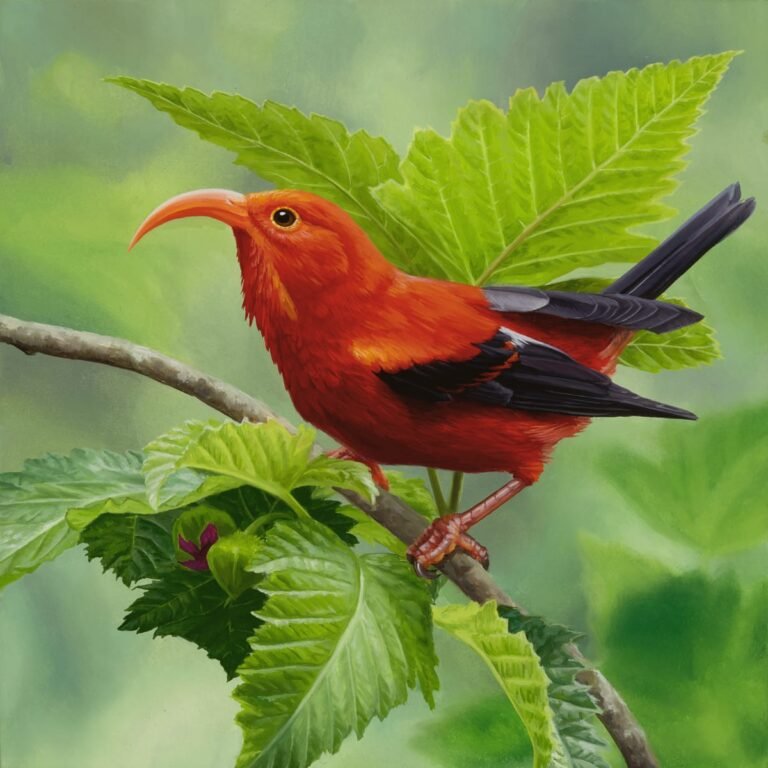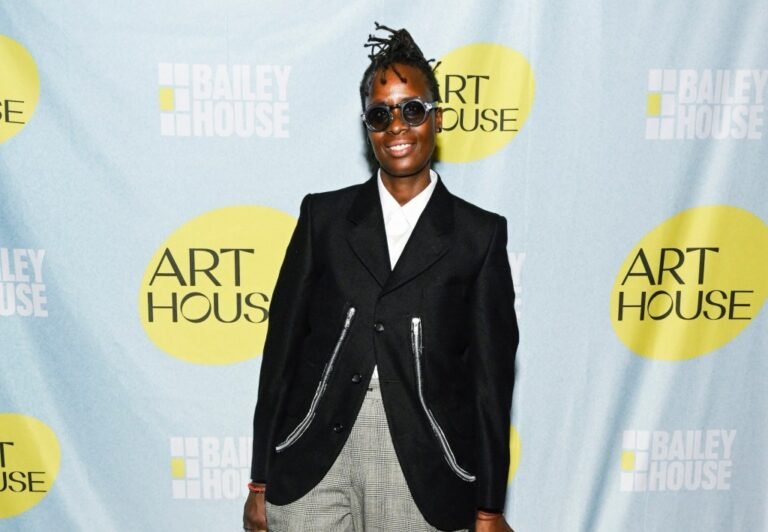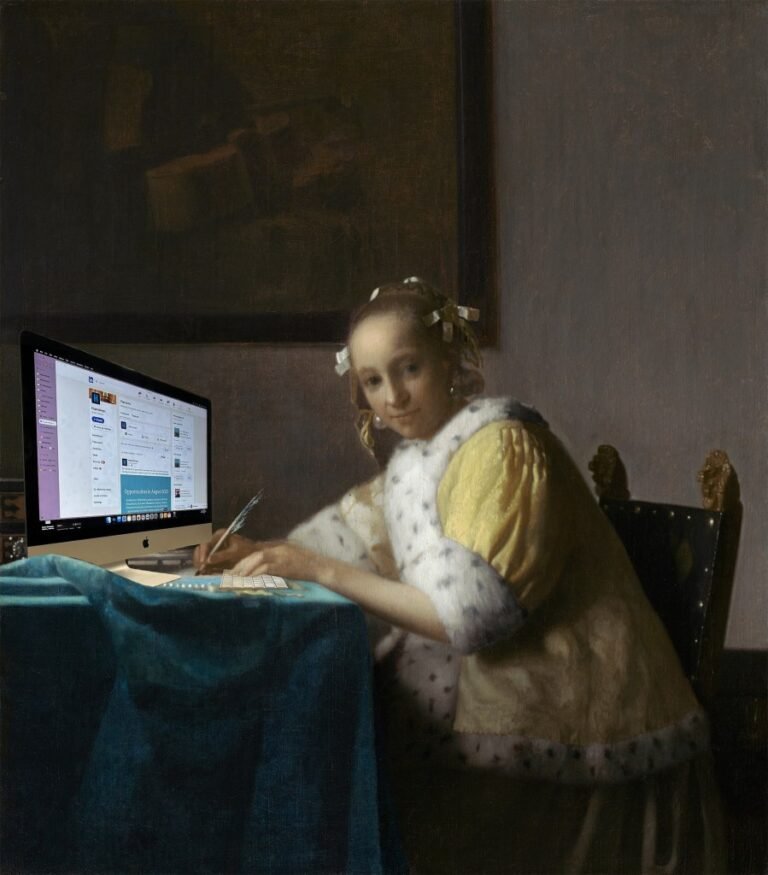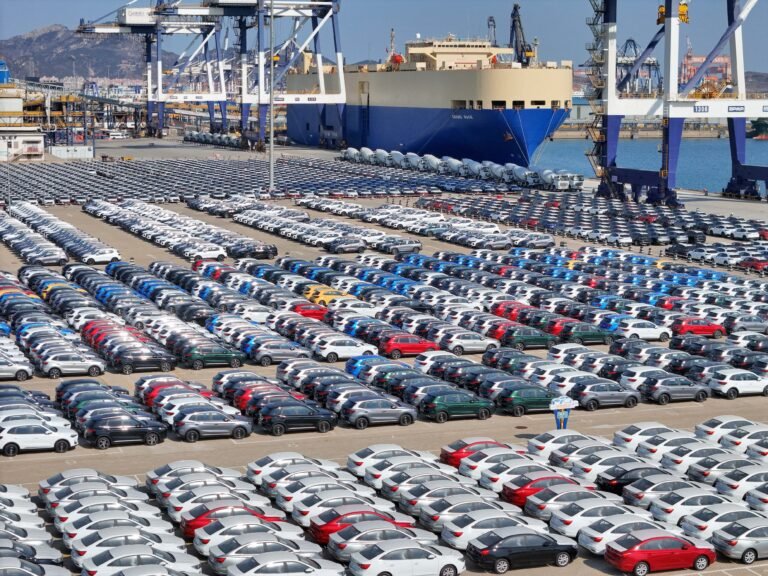


LOS ANGELES — On Christmas Eve 1968, astronaut William Anders captured the first color photograph of Earth from space as the Apollo 8 spacecraft orbited the moon. The image, now known as “Earthrise,” reframes the planet not as a grid of nations locked in conflict, but as a shared vessel — borderless, carrying us all through the void.
The photograph, along with Samantha Harvey’s 2023 novel Orbital, served as a source of inspiration for Korean diasporic artist Jin Meyerson’s latest body of work, currently on view at Perrotin. The exhibition follows an orbital rhythm of its own, beginning with four darker paintings evoking sunset to night, then transitioning into six luminous works that guide the viewer from sunrise through daybreak.
As a Korean adoptee raised in rural Minnesota by a Swedish-American mother and a Jewish father, the only thing Meyerson brought with him from the orphanage in Incheon was his love of drawing. His story echoes that of approximately 200,000 children sent abroad to the United States and Europe after the end of the Korean War in 1953, as the South Korean government prioritized international adoption over building a domestic welfare system. The exhibition’s title, SAFE SPACE, speaks to an ongoing search for respite amid the dislocation of hybrid identity. It also questions the very plausibility of safety itself, reminding us that even well-intentioned spaces can mirror the dynamics of exclusion they aim to dismantle.

Each work in the show is anchored by a fluorescent orange underpainting — referencing a color commonly used to signal distress in nautical, aviation, and hunting contexts. In the gallery’s courtyard, this motif takes physical form in “WINDSOCK” (2025), a site-specific installation that renders the functional wind indicator strikingly useless. As the piece flounders from side to side, we’re invited to peer inside the cylinder and catch a glimpse of the blue Los Angeles sky above. Enclosed in the courtyard, the work echoes calls for help gone unheard, especially for those whose identities have been shaped by rupture.
Meyerson’s paintings extend this framework through abstracted landscapes, composed from both found and personal photographs that he digitally fragmented and reassembled using AI, spinning them into unrecognizable portals of refracted light. The resulting works evoke a sense of spatial drift, mirroring the artist’s own confrontation with the limits of fixed identity while pointing to the strength derived from navigating multiple cultures and emotional worlds.

Meanwhile, the paired digital works “SPACE SHIP 1” and “SPACE SHIP 1.2” (2025), installed on opposite sides of an adjoining wall, explore the collision of two- and three-dimensional planes. Other paintings, like “FERRIS WHEEL” and “OWL” (2025), offer hints of place through city skylines barely visible along their lower edges, though the precise locations remain elusive.
Another foundational element of the exhibition is the soundscape composed by Mtendere Mandowa, better known as Teebs, that cloaks the space in a meditative, lush score. Played on a loop throughout the gallery, the track offers a kind of synesthetic translation — an attempt to render what the paintings might sound like through woven fragments such as frog ribbits and the rhythmic hum of Teebs’s computer fan. The commingling of natural and artificial sounds evokes alternative ways of marking time, echoing the paintings’ emotional tone.


When I approached the painting “EVENT HORIZON” (2025), the largest work in the show, I had the sensation of spinning through the cybersphere. The monumental work recalls the swirling visuals of an old Windows Media Player, from a time and space that feels oddly familiar yet out of place. The piece is inspired by the familial behavior of ancient aspen tree groves on Earth, specifically those in northern Utah and Colorado. Like mushrooms, aspens grow through an interconnected root system in which a single offshoot can propagate an entire forest. It’s a model of singularity branching into collective life that mirrors Meyerson’s own story. Now based in Seoul, in the country from which he was once sent away, he has transformed a supposedly refracted selfhood into fertile ground. Not quite Korean Korean, but something beautifully in-between, his identity emerges not in isolation but in relation: a root system made visible only through reflection in another.
Jin Meyerson: SAFE SPACE continues at Perrotin (5040 West Pico Boulevard, Mid-Wilshire, Los Angeles) through August 29. The exhibition was organized by the gallery.





